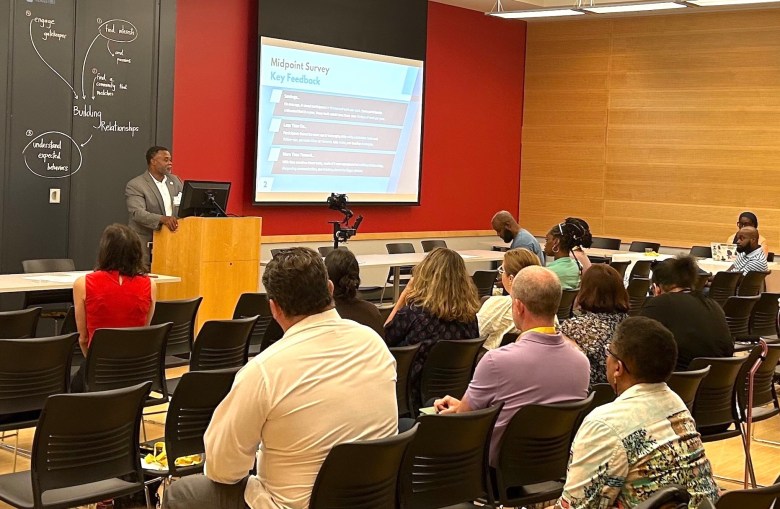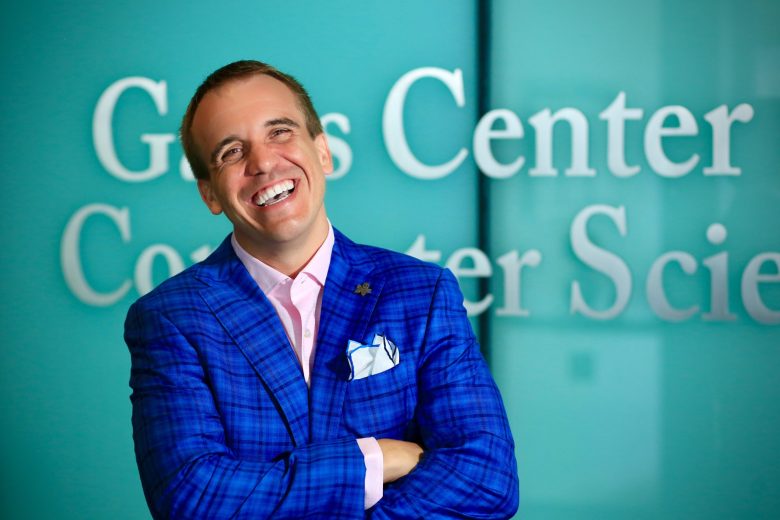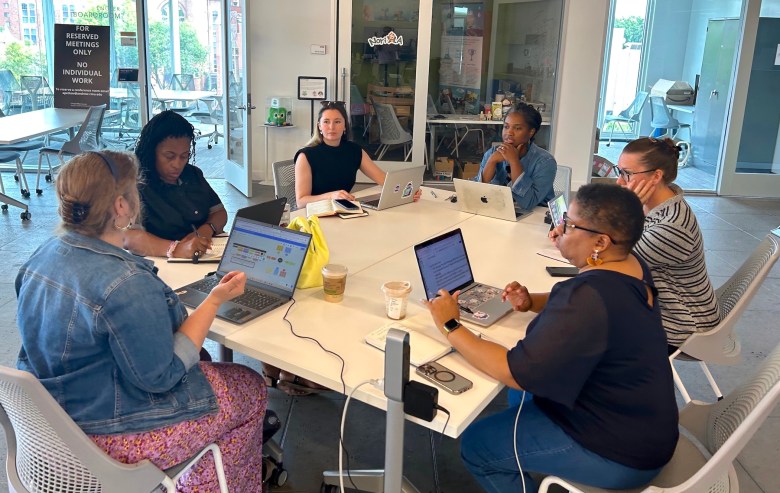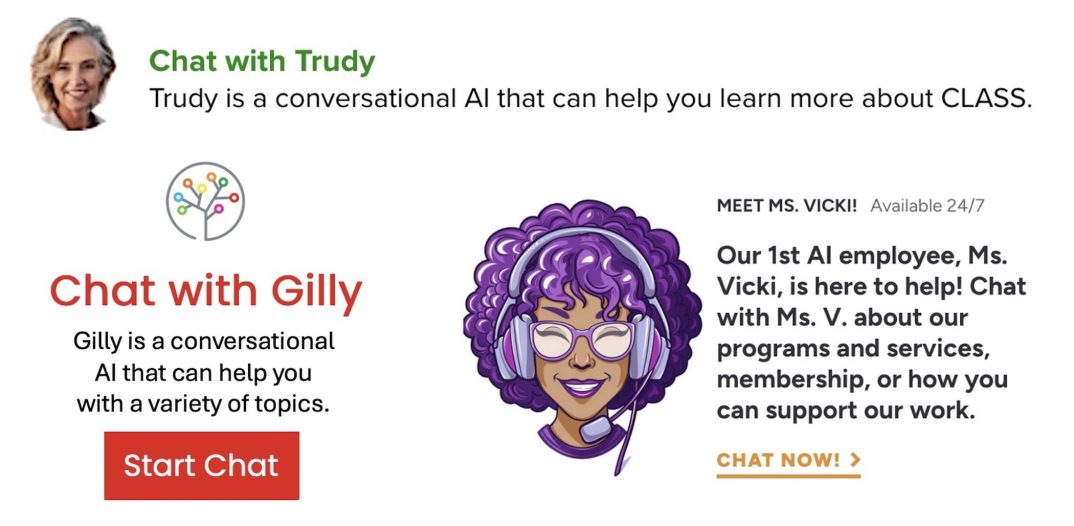Speculation about the future of Artificial Intelligence focuses chiefly on its impact in the business sphere — company profits, displaced workers, wayward algorithms, consumer reaction.
This spring, the executive team at the Forbes Funds philanthropy launched a homegrown AI product designed to help Pittsburgh-area nonprofits serve their clients more efficiently and cost-effectively.
SkillBuilder (by Point Breeze software developer maad labs) creates a “digital colleague” custom-built for the specific needs of the nonprofit itself, a helper for the helpers.
Initial reports indicate SkillBuilder (aka “Skilly”) is already proving transformative for the 12 organizations that participated in the pilot rollout.
The impetus to apply innovative AI solutions to address the challenges nonprofits face began four years ago, says Forbes Funds President/CEO Fred Brown.
“We asked ourselves, how can AI assist Pittsburgh nonprofits in reaching their goals in education, housing, food, transportation, health care, equity? How can we help them do more with the resources they have, which are often limited, particularly in the area of staff?” he says.
 Forbes Funds President/CEO Fred Brown discusses the impact of AI usage for nonprofits. Photo courtesy Forbes Funds.
Forbes Funds President/CEO Fred Brown discusses the impact of AI usage for nonprofits. Photo courtesy Forbes Funds.
Brown approached maad labs CEO Adam Paulisick, with whom he’d previously partnered on a community computer project at Homewood Children’s Village. A former chief product officer at Boston Consulting Group and senior vice president at the Nielsen Co., Paulisick has spent the last decade at Carnegie Mellon University as a lead executive education instructor at the School of Computer Science and professor of entrepreneurship at the Tepper School of Business.
“The process starts with a base LLM, a large language model, which is a deep learning algorithm that absorbs all the organization’s information,” says Paulisick.
“It allows the agent to talk naturally as if you were talking to a development director or salesperson by any name, without losing the humanity that ultimately defines any organization’s success. It’s a progression that shapes raw knowledge into a more human response, the way you would train a human colleague.”
The AI trainee, however, can watch videos at 1,000 times the speed of a person and absorb 10 years of documents in a few weeks.
“With three days of training,” Paulisick says, “your AI employee is about as good as a three-month employee in responding to contextual questions. Around three weeks, your AI is about as good as an employee you’ve had for 12 to 18 months.”

 Adam Paulisick, CEO of maad labs. Photo courtesy of Emmai Alaquiva.
Adam Paulisick, CEO of maad labs. Photo courtesy of Emmai Alaquiva.
Having ingested the data, SkillBuilder creates a specific “voice” and conversational tone reflecting the nonprofit’s culture. The result is a versatile website chatbot that provides confident and differentiated answers and is available to the public 24/7.
“You have to treat AI like an employee,” says Paulisick. “You can’t treat it like a technology. The good news about AI is that it doesn’t get sick. Or tired. Or petty, selfish, inconsistent or sidetracked by issues in mental or emotional health. But the training you’re doing to enable your AI colleagues to succeed is the same rigorous type of training you would do for your human colleagues.”
This past February, Paulisick and the Forbes Funds team — led by Chief Operating Officer Olivia Benson, Chief Program Officer Hannah Karolak and Greater Pittsburgh Nonprofit Partnership Director Emily Francis — conducted three one-month cohorts demonstrating SkillBuilder technology to nonprofits.
Cohort 1 offered a comprehensive look at using AI to streamline complex internal organizational issues. Cohort 2 focused on leadership and AI-aided sales and fundraising support. Cohort 3 guided the training and onboarding of an AI employee to optimize public engagement and improve dialogue with potential donors and partners.
Several cohort members integrated SkillBuilder into their operations, among them Allegheny County Area Agency on Aging, Balafon West African Dance Ensemble, Community Living and Support Services, Greater Valley Community Services, Homewood Children’s Village, Macedonia FACE, Greater Pittsburgh Community Food Bank and Spina Bifida Association of Western Pennsylvania.
Visit their websites, and you’ll be able to speak “live” with Aggy, Luma, Trudy, Gilly, Ms. Vicki and other digital representatives equipped to not only provide information but adapt their responses to the human on the requesting end.
Michael Kroeker, project manager for Allegheny County Area Agency on Aging, says Skillbuilder and other tools gleaned from the sessions markedly increased his productivity.
“Instead of having a brainstorm session with a dozen people that uses an hour of everyone’s time, I can ask our AI assistant, ‘What are 10 ways that other area agencies on aging are trying to solve the housing crisis for older adults?’ It will give me a list I can fact-check and then take to our staff meeting for consideration. I’m better prepared to guide the conversation past the initial brainstorm. And it took 10 seconds.”
Alissa Freese, community living and support services development associate, had already started using AI for social media posts but wanted to bring the rest of her team on board.
“It was getting everyone to understand what the opportunities were and exploring that with them. Since then, we’ve discovered so much more I didn’t realize we can do with AI. It’s been really incredible,” she says.

 Forbes Funds AI cohort participants receive first round of Skillbuilder training. Photo courtesy Forbes Funds.
Forbes Funds AI cohort participants receive first round of Skillbuilder training. Photo courtesy Forbes Funds.
America’s nearly 2 million nonprofits are staffed by approximately 12 million employees, making it the third-largest industry in the country behind retail and manufacturing. Yet, the sector experiences chronic difficulty recruiting and retaining employees. Nonprofit leaders are coming to view AI as a way to augment and strengthen their workforce.
Tools like SkillBuilder benefit nonprofits with less money and fewer resources, says Brown. “It is vital that nonprofits have access to technology that raises their capacity to compete in the 21st-century global economy. It allows for what we call ‘human-centered design,’ where instead of focusing only on organizations, we focus on the people we intend to help.”
Cohort members estimated that one AI assistant on average could save their organization up to 10 hours of work per week and nearly 500 hours over the course of a year.
Those saved hours, says Francis, translate into a “less time on, more time toward” dynamic that can repurpose a significant share of staff labor from rote tasks toward building relationships, deepening communications and thinking about the bigger picture of mission and service.
“AI brings very powerful tools that will change personal structures within an organization,” she says. “But the people who hold institutional knowledge will be even more important. The new technology is putting the value back in the humans who have been doing this work and are the experts on their community.”
In addition to an upcoming round of new AI training sessions, Forbes Funds offers an online Strategic Design in a Box course co-developed with maad labs and CMU’s Swartz Center for Entrepreneurship that supplies nonprofits with AI tools to identify and address organizational challenges and opportunities.
Questions? Just ring your nonprofit’s internet doorbell and ask for Aggy, Luma, Trudy, Gilly or Ms. Vicki. They’ll get you sorted out and up to speed in no time at all.





